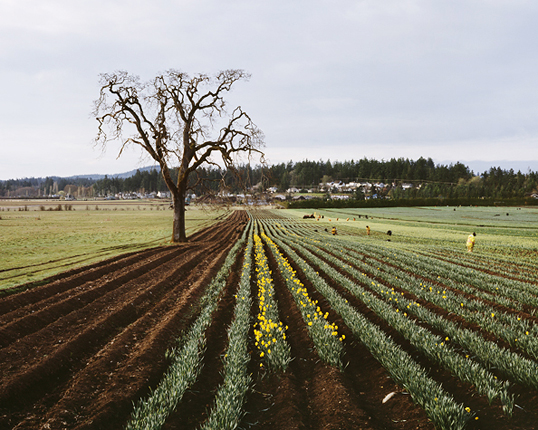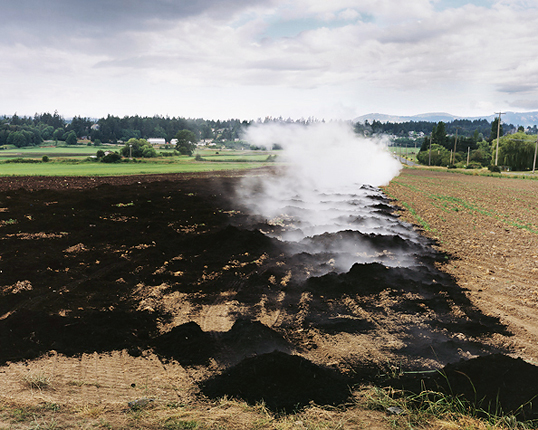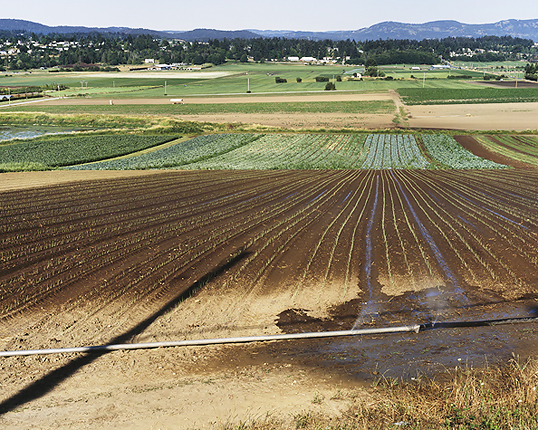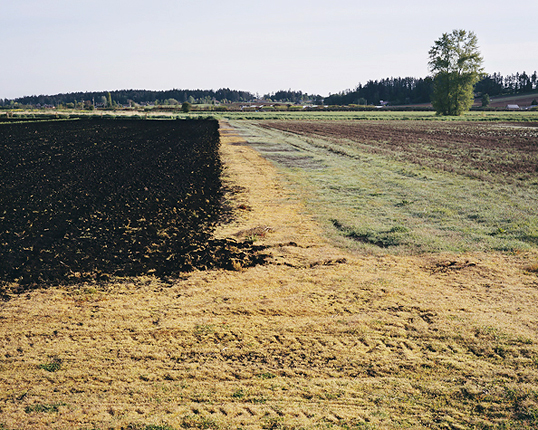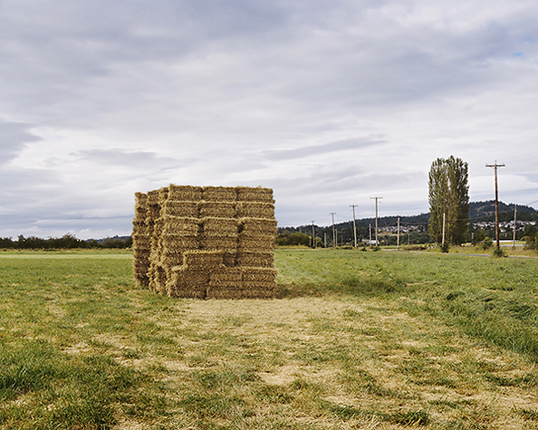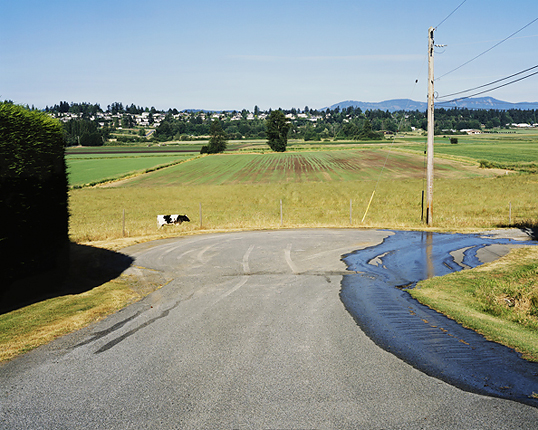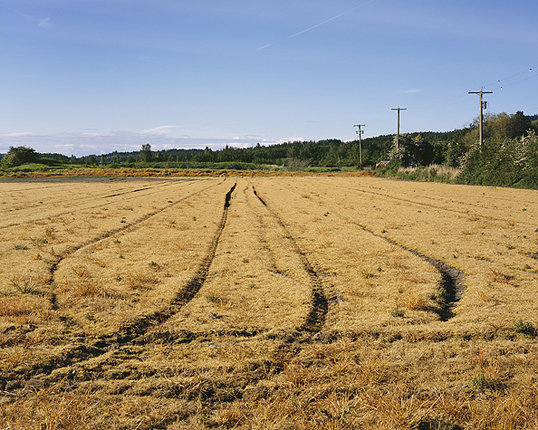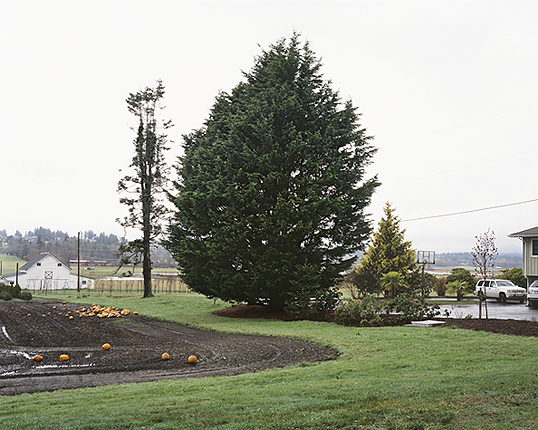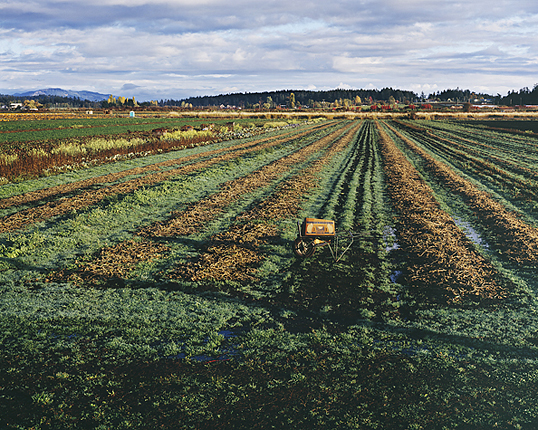I made these photographs between 2008 and 2010 in the farmlands of the Saanich Peninsula on Vancouver Island. Farming is often viewed through the lens of nostalgia and romanticized as a lost way of life that was more connected to nature. The farm fields were a fruitful way for me to situate the human in nature because it is within this interface that questions arise regarding our place in the natural world. Farmland is an exotic territory for most of us, despite the fundamental nature of farming as a precondition of our culture. As much as the idea of wilderness implies no human presence, these anthropogenic landscapes are reminders of our inescapable and constant interaction with the natural world.
What first attracted me to this landscape was the quality of deep open space enclosed by distant hills. This dimension, combined with the linear traces of farming and boundaries, form the visual framework which supports this series. The word Geometry is derived from ancient Greek meaning 'to measure the earth' and the earliest application of geometry was to partition land. My point of view with the field pictures was topographical. Like a map, these photographs are a precise representation of surface and are both a record and an abstraction.
As the seasons came and went, I made pictures that for the most part, are representations of transitional states of farmland. It was often, as I stood in the silence of the fields, that I looked at the black earth and understood that this is the very skin of the earth upon which I stood. From this viewpoint, I began to see the surface of this landscape and the traces of farm work as indices of the human actions which shape the land for food production.
These landscapes are concerned with concepts of consumption, transformation, regeneration and the elemental. However, these pictures are also a vantage point from which to consider our dependence upon fertile soil and to see farming as the foundation upon which our societies are built and sustained.

